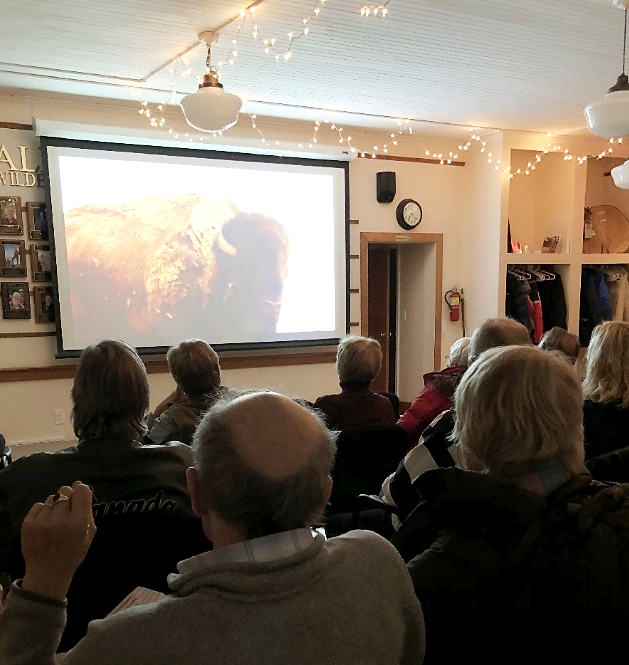Cozy up with a great nature documentary and protect our native grasslands!
For those of you who have not seen the “Nature of Things” series, the Grasslands: A Hidden Wilderness episode in September featured a landscape that many Canadians are not familiar with. Nature Canada is passionate about protecting grasslands and our partners are too! This documentary has been not only an opportunity to showcase the beauty of the native prairie grasslands, but also bring awareness to the species loss and need for protection of the ecosystem. We spoke with co-writer, director and producer Alex Burr to discuss some of the wildlife featured in the documentary, such as grizzly bears and pronghorn antelope, and got the insider scoop on what it’s really like filming a nature documentary.

The documentary starts with wide shots of the vast grassland landscape and the song birds that bring life to the grassy fields. Throughout the documentary, the audience gets to experience the behaviours of the bison, sage grouse and swift fox, to name a few, with commentary from the people who live on the land. The team also followed a grizzly bear family for about a year, seeing the cubs grow and change and watched this timid animal explore the grasslands. Grizzles have not been spotted in the grasslands for decades, so seeing footage of them frolicking through fields was quite a sight.
Alex says he feels lucky to have firsthand experiences from watching the wildlife featured in the film. However, between spending 12 hours a day in the field, hiking with heavy packs, extreme weather, and time spent away from family, this is far from an easy job.
The unpredictability of wildlife is an added factor to the difficulty of filming nature documentaries. They filmed the grizzly bear family three different times throughout the year. During the summer shoot, the team went back to where they had previously filmed the bears and during the two weeks they were there, they got only two days of footage.
That said, animal sightings make up for it. Alex says that “seeing animals behave in their natural environment without any interventions from humans—it’s extraordinary.”
For Alex, “as a wild place, the grasslands are a surprising one.” It was once an enormous, sprawling wilderness, known as the Serengeti of North America. However, over 80 percent of this ecosystem has been destroyed or significantly changed by humans. Being there filming, Alex got a taste of what it once was. It was a memorable experience and he told us that “other wild places are as you expect, but the grasslands feel special.” Alex confessed that every time he drove west on his way back to his home in Vancouver, he felt a “pang” when he hit the Alberta foothills and moved into the Rockies—he missed the vastness of the prairies.
Of course, the documentary does not only feature animals—it also features discussions with women from the Blackfoot First Nation, a sustainable cattle rancher, and ecologists trying to bring plant diversity back to the land. Through talking to the various people who were in the film, Alex explained that “the grasslands have always been the landscape manipulated by people. People have always been at the centre of this wild place.” While this may have a negative connotation, stories from the Blackfoot Nation tell us that the land was manipulated in ways that prevented large wildfires, promoted land fertility and helped manage the bison population. These historical narratives demonstrate that human impact on the land does not have to be negative.
The documentary ends with footage of the grizzly bear family. In the prairie grasslands, spending time with grizzly bears and cubs is rare and special. Grizzlies are an anomaly in this landscape and their return to the grasslands gives people a sense of what the grasslands were and could be once again. The Alberta Wilderness Association, Nature Regina and Nature Saskatchewan organized public viewings of the documentary. These screenings sparked discussion about the current status of native grasslands, their protection status, the intactness of native vegetation, traditional knowledge, existing species, and strategies for restoration.
As the most endangered ecosystem in the world, it is crucial to protect what is left of the prairie grasslands so that people and species can engage with the land for generations to come. We encourage you to check out the documentary and take action to protect the grasslands by signing our petition.
Burr, A. & Turner, J. (Co-Writer & Director). (2019). Grasslands, A Hidden Wilderness [Television series episode]. In J. Turner (Producer), The Nature of Things. Canada: Canadian Broadcast Company. https://www.cbc.ca/natureofthings/episodes/grasslands-a-hidden-wilderness



